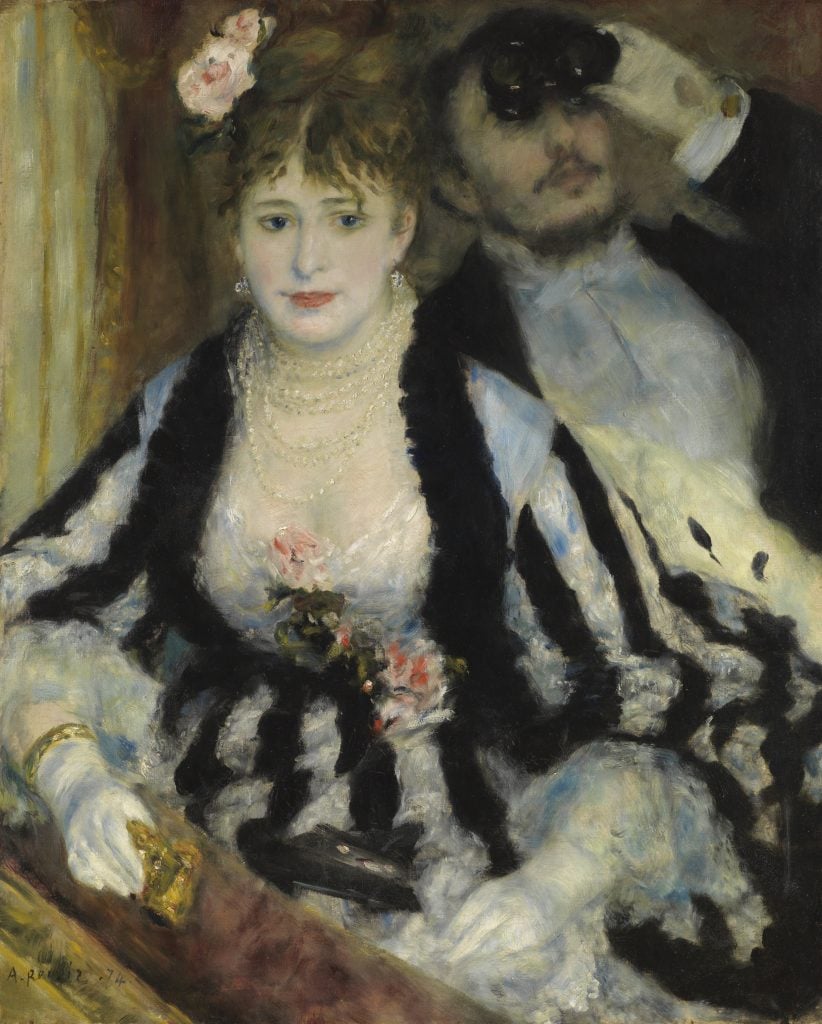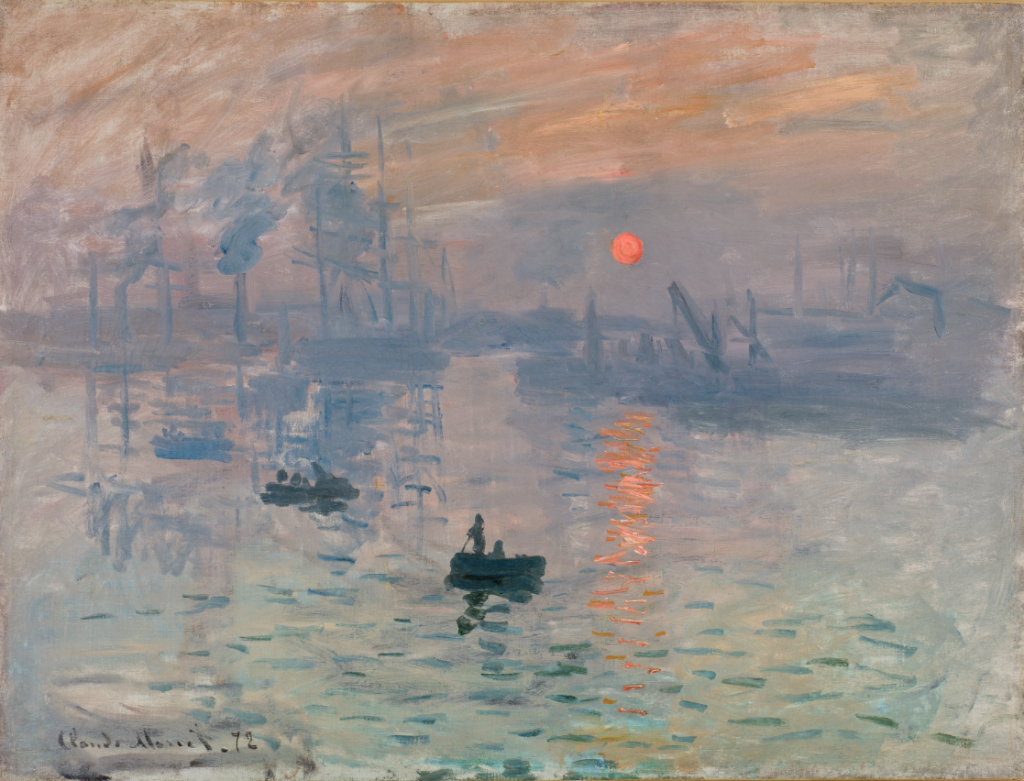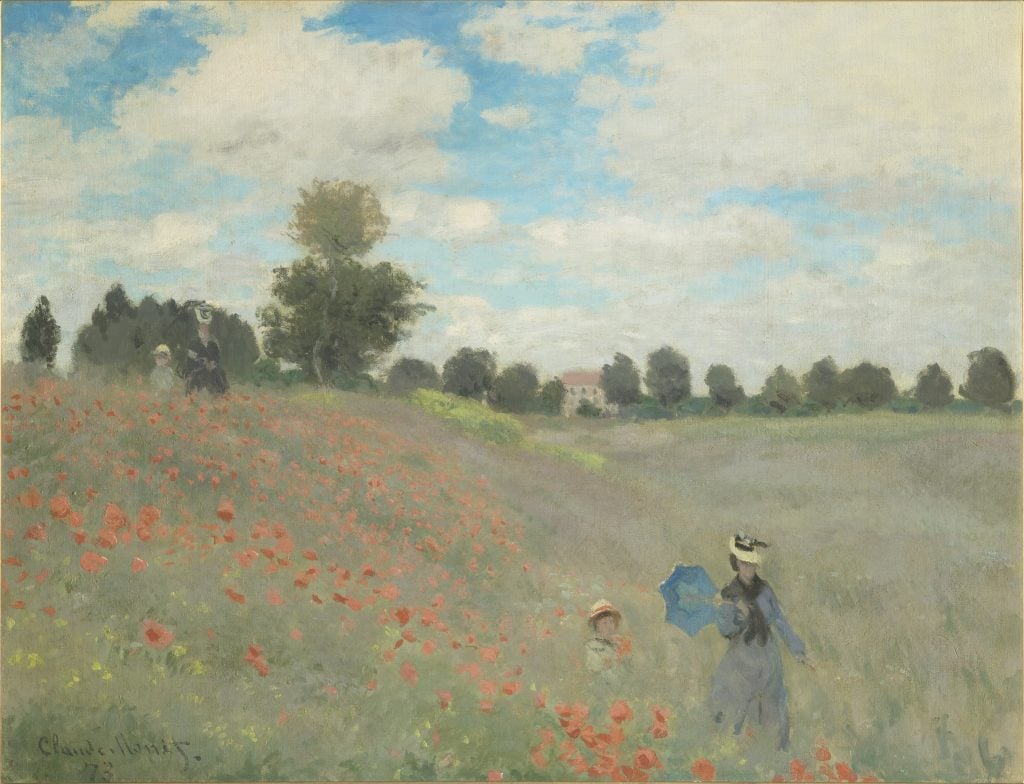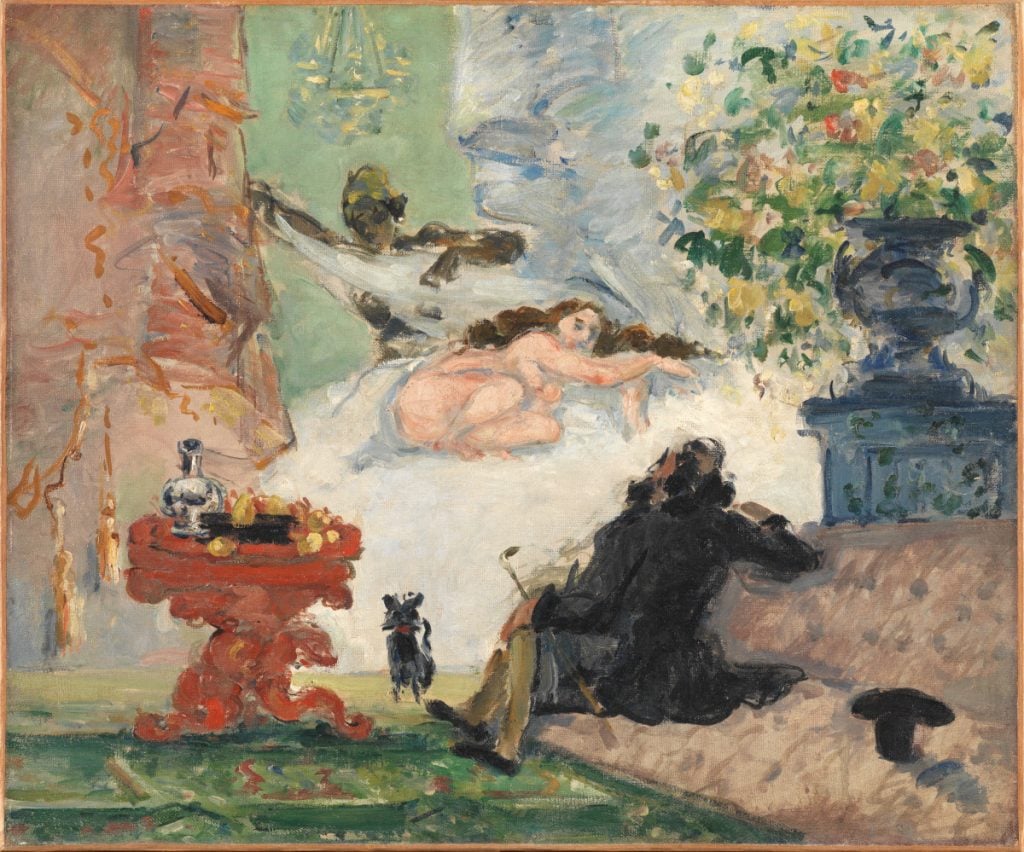Reviews
‘A Plaything for Rich People and Fancy Museums’? Reevaluating Impressionism at 150
A number of exhibitions find new ways to look at this much-studied movement.

In a recent recital in the auditorium of Paris’s Musée d’Orsay, violinist Marina Chiche plucked at her instrument with a flurry and tempo that echoed the brisk brushstrokes in the blockbuster exhibition upstairs, “Paris 1874: Inventer l’impressionnisme” (“Inventing Impressionism”). The piece she played, a sonatina by Pauline Viardot, may very well have inspired the Impressionists themselves, along with other writers and artists of their day, who gathered in Viardot’s illustrious salon in the 1870s.
The concert is part of an ambitious museum program that plunges visitors into the historical context that led to the birth of one of the most beloved but also misunderstood artistic movements. Co-organized with the National Gallery of Art (NGA) in Washington, D.C., where it will travel in September (under the title “Paris 1874: The Impressionist Moment”), the show is not alone. It is the defining apex of a slew of ambitious exhibitions around the world, particularly abundant in France, which is re-examining ingrained myths around these artists, along with some of the movement’s overlooked contributors, in celebration of its 150th anniversary.
As widely loved as Impressionism remains today, its overexposure has some rolling their eyes at museums now rushing for the opportunity to spotlight what skeptics tend to reduce to “pretty pictures” and “a plaything for rich people and fancy museums,” as Mary Morton of the National Gallery put it.
That response is not so different from some of the criticism directed against the Impressionists 150 years ago. Journalists in the late 1800s feared that then-emerging artists like Paul Cézanne, Edgar Degas, Claude Monet, Berthe Morisot, Auguste Renoir, and Camille Pissarro were “imposing an art of pure enjoyment” to the detriment of more serious painting about historic events typically selected for the official, state-influenced Salon exhibitions, notes an Orsay catalogue essay by art historian Bertrand Tillier. They went further, mocking the informal group for their unfinished, sketch-like painting style, considered “unhealthy” and even “insane.”

Claude Monet, Impression, Sunrise (1871). Photo: Musee d’Orsay. © Musée Marmottan Monet / Studio Christian Baraja SLB.
The Impressions About Impressionism
Famously, the name “Impressionist” stuck to the group after writers led by Louis Leroy used it to insult, not praise, Monet’s Impression, Sunrise (1872), which became the center piece of that first Impressionist show, held in a former photography studio in Paris’ Opera district. In Leroy’s piece, which nevertheless helped push the movement to the fore, he said Monet’s roughly brushed rendering of the sun rising over the industrial port in Le Havre, done in foggy shades of periwinkle electrified by an orange sun, was less complete than “wallpaper in its embryonic state.”
Today as well, not all responses have been positive (though most have) to the Orsay’s exhibition, which seeks to reproduce a selection of the iconic 1874 show and compare it to the official Salon held simultaneously. (It is seconded by a parallel VR experience.) The Times, for instance, interprets the Orsay show as suggesting Impressionists lacked daring for focusing on the safer “world of dance and theatre, parks and rural idylls,” rather than subjects like the horrific Franco-Prussian War and subsequent civil war which had brought the city to its knees just a few years before. The writer visits the low-income northern Paris suburbs of St. Denis, calling it “a far cry from the romanticized Paris of the impressionists, but it’s that half-seen reality that captivates tourists,” she adds. “By downgrading their radicalism, the Musée d’Orsay is giving a bit of a dressing-down to Degas, Monet and the rest of the gang, but it certainly needs their box-office appeal.”
On the Orsay press opening day, there were also early signs of some grumblings to come, when a French journalist asked the curators, Sylvie Patry and Anne Robbins, whether “the public will be a little disappointed, when, expecting to see a lot of Impressionist paintings, they instead discover other paintings we don’t talk about that much today?”
The curators are in fact hoping to demonstrate that the movement’s first exhibition included a more eclectic mix of artists than commonly thought, mostly united around economic motivations and a yearning for a measure of freedom from the Salon’s grip on who was able to show art. Yet theirs was not a cohesive rebellion against the powerful Salon, as long taught, and the Orsay shows there were significant overlaps between the two exhibitions, their participants, and the types of works shown.

Claude Monet (1840 -1926) The Poppy Field near Argenteuil (1873) Oil on canvas. 50 x 65,3 cm Paris, Musée d’Orsay © RMN -Grand Palais (Musée d’Orsay) / Hervé Lewandowski
From 1874 to 2024
The 1874 exhibition featured only a minority of Impressionist works. A mere seven out of 31 artists and 51 out of 215 artworks in the show, organized by a group of the so-called Société Anonyme des Artistes Peintres, Sculpteurs, Graveurs were later dubbed Impressionist. The rest included odd, etched portraits of dogs, classicizing sculptures and a Renaissance-style enamel portrait, all by mostly forgotten artists.
So what are we celebrating 150 years later? The Orsay curators, along with Morton and Kimberly Jones at the NGA in Washington, did take a risk when they aimed to bust some long-perpetuated inaccuracies of the David-and-Goliath type, which continue to cling to Impressionists.
“This black-and-white narrative keeps being repeated in every art history class I ever took, and so people just assume that narrative is true and accurate, but it’s a gross oversimplification of reality,” said Jones. “We want to complicate the narrative, pull apart some of the tidiness, to get to the actual truth.”
The 1874 show “was far from being uniformly radical, so there’s a need for nuance and re-examination,” added Robbins at the opening. But that doesn’t mean the event was anything short of groundbreaking. “Among the artists who exhibited in 1874, there is a core, a kind of sub-group of artists, who are doing other things… and this is the moment this new painting begins to crystallize,” she said.
In addition to the strange animal portraits and academic sculptures, the show also featured some masterpieces, which, for those looking carefully, did—and do—stand out as astounding and new.
Paul Cézanne’s A Modern Olympia, Sketch (1873-74) of a nude prostitute observed by a fully dressed man, is beside Berthe Morisot’s The Cradle (1872), a gestural masterpiece of a mother observing her sleeping baby, by the only woman in the 1874 exhibition. Nearby, there is Edgar Degas’s Laundress (1869), a woman slouched over her ironing board rendered in agile, limited strokes, or Monet’s Boulevard des Capucines (1873-1874), showing the modern, newly built street. We also see what some have called “pretty” things: a field of red flowers almost engulfing a woman and child in Monet’s Poppies (1873). And back to Monet’s Impression, Sunrise (1872), no industrial port ever looked so stunning.
These works and the other Impressionist paintings were “sources of scandal” because of how swiftly they were executed, and the decision to “paint the world around them,” said Patry. This, she said, “spurred a sense of shock.”

Paul Cézanne, A Modern Olympia (detail), (1873-1874). © Musée d’Orsay, Dist. RMN -Grand Palais/Patrice Schmidt.
The nascent Impressionists were neither blindly romantic nor “safe,” as some critics are still saying. They were depicting their times, and, in a major break from the past, they did so without the moralizing, academic history paintings that official Salon juries had traditionally praised—though several modern and, yes, radical works, particularly examples by Manet, did also pass Salon muster, as intelligently shown in the Orsay exhibition.
Context, in short, is key. “Many of the artists are responding to the traumatized citizens of Paris after ‘l’année terrible’ [“the terrible year,” as Victor Hugo called the violent series of conflicts rocking Paris from 1870-1871], and you cannot have what people think of as Impressionism… without considering what happened three years earlier in the capital, which was horrific,” said Morton.
As a result, the Impressionists felt a “need to move forward, to forge a new path, and not be mired in the past, to move beyond all the trauma,” added Jones. “We’re presenting this so people understand what they’ve lived through, and why this art is forward-thinking, and why there is a degree of optimism in this.”
There are “edgier, tougher things” in the first Impressionist show, said Morton. “Paul Durand-Ruel was their dealer, and he packaged the Impressionism that we think of today, which is pretty pictures… but these exhibitions were never just that. They were more complicated, more diverse, and edgier.” Degas, for instance, “is the great portrayer of the dark side of Victorian femininity,” and Camille Pissarro “paints from a position of paint and instability… He paints to survive. He paints for joy,” she said.
As the world they knew shifted beneath them, the Impressionists, aware that all could have been lost in the recent destruction, took a leap and began showing the poetry and significance of a fleeting moment. Their rapid painting technique was ideally suited for this, allowing them to seize an ephemeral impression of light, or any simple act of daily life. This was indeed radical, and far from frivolous. It was life-affirming, and, for some, a mechanism for survival.





